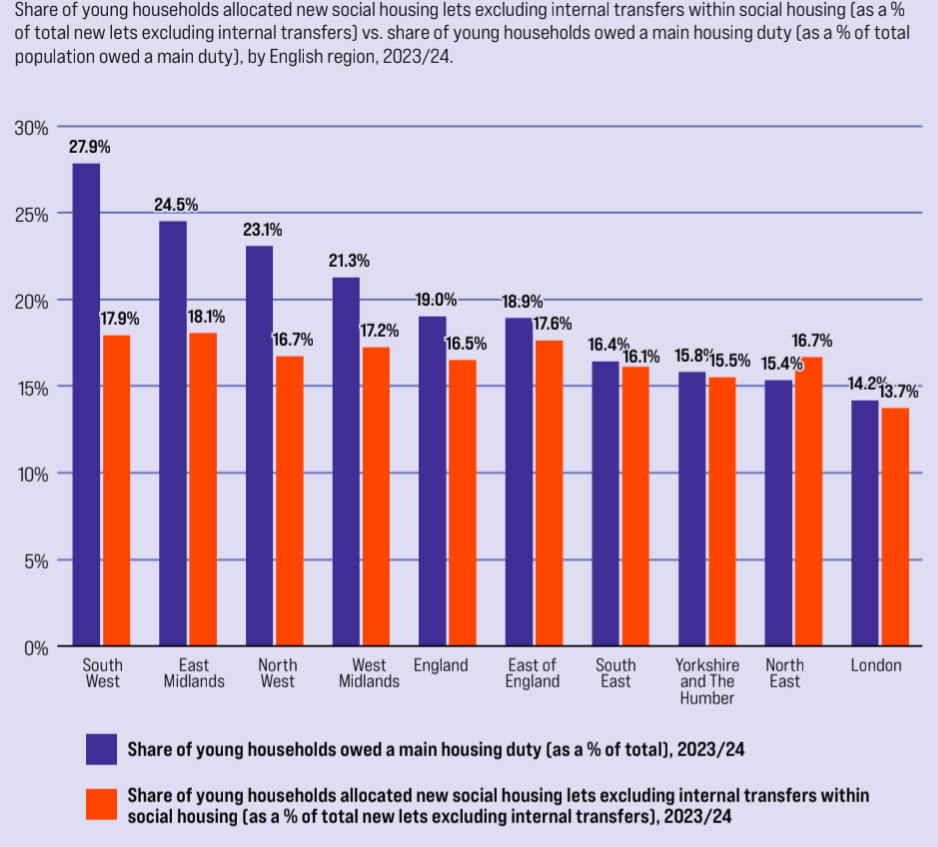The UK's Hidden Housing Crisis: The difficulties young people face finding a home
Why we really need to build more homes
The call to build more homes can sometimes seem a bit flippant or overly focused on enabling relatively wealthy people to buy a home.
Often this can mean the more serious problems we face from not building enough hones
In the UK, the challenge of securing stable and affordable housing is particularly acute for young people, especially those who have faced homelessness.
This week saw the launch of the ‘Move On’ report from Centrepoint, funded by Nationwide, which sheds light on the systemic issues that create barriers to accessing suitable housing for this vulnerable group. This report include data on young people's housing challenges and offers recommendations for how the government can start to address these problems.
Key Findings: A Deep Dive into the Crisis
The Centrepoint report highlights several critical issues:
A shortfall in the provision of social housing. There is a significant gap between the allocation of social housing and the number of young people in need, with nearly all English regions facing a shortfall. Regions like the South West, East Midlands, and North West are particularly affected, struggling with both overall social housing stock and a lack of one-bedroom units.
The South West recorded the largest allocation shortfall, with a gap of 9.9 percentage points, followed by the East Midlands (6.5 percentage points) and the North West (6.4 percentage points). Limited access to social housing for young people can in part be attributed to very low provision of one bedroom homes, with regions such as the South West and East Midlands having particularly high shortfalls of these types of homes.
Young people face affordability challenges despite financial support from government. Even among those young people who do secure social housing, a staggering 52% report struggling to afford their rent, even with benefit support. 29% of those surveyed had fallen behind on their rent and 25% were worried about things like not being able to pay rent.
There are specific struggles for those living in the private rented sector (PRS). The PRS, often the only option for young people leaving homelessness services, presents its own set of challenges. With a shrinking supply of available properties and rising rents, affordability is a major concern. Several regions have seen declines in PRS including the South East (-5.2%), Yorkshire and the Humber (-4.4%) and the South West (-3.1%). In part I’d expect this to be down to income tax changes which have affected landlord profits, interest rate rises and concerns over Government regulation reducing landlord investment.
The decline in Houses in Multiple Occupation (HMOs), a common option for young people, further limits access. In 2023/24 the HMO stock fell by 2% across England adding to a fall of 5.8% the previous year.
Lack of available supply has impacted PRS affordability with half of private renters surveyed reporting they had struggled to afford rent in the 2023/24 financial year. The report predicts the trend of increasing rents will continue and it will reach 8% in 2024/25
Too many young people be housed in temporary accommodation. The report also highlights the overrepresentation of young people in temporary accommodation. In 2023/24, 16% of households entering temporary accommodation were young people, despite 16–24-year-olds making up only 13% of the adult population.
Beyond building more homes: What else needs to change
The Centrepoint report doesn't just highlight the problems faces young people it also proposes a number of solutions. Key recommendations for the government include:
Build More One-Bedroom Homes: The government should prioritise the development of one-bedroom social homes which are particularly suitable for young people. This could involve setting targets in the National Planning Policy and creating funding for social housing providers specifically for these homes.
Improve Social Rent Affordability: Social housing providers must ensure that affordability checks don't discriminate against those on the lowest incomes, including young people who receive lower rates of Universal Credit.
Enhance Access to Private Rented Sector: Abolishing the Shared Accommodation Rate (SAR) would enable young people to better afford one-bedroom private rentals. While this might not be possible, a review of benefit rules and HMO regulations could also help.
Increase Private Rented Sector Affordability: Reinstating pre-2016 annual reviews of Local Housing Allowance (LHA) rates to reflect real-time market changes would help young people access private rentals.
Reform Temporary Accommodation: The government should limit the time spent in temporary accommodation that doesn't offer support and ensure rapid rehousing support is provided. For those in temporary accommodation for over a year, access to social housing should be prioritised.
Expand Youth-Specific Emergency Housing: Developing more youth-focused emergency accommodation is crucial, along with extending guidance to ensure young people aren't placed in unsuitable B&B settings.
Support Stepping Stone Accommodation: The government should enable the development of income-linked "Stepping Stone" accommodation by charities including Centrepoint and support for the "living rent" model.
Help young people: Build more homes
The Centrepoint report paints a stark picture of the challenges young people face in securing stable housing in the UK. Building more homes in general remains key to solving many of our housing challenges and by implementing the recommendations outlined in the report, the government can take meaningful steps to ensure young people have access to the safe, affordable housing they need to build a better future
.







